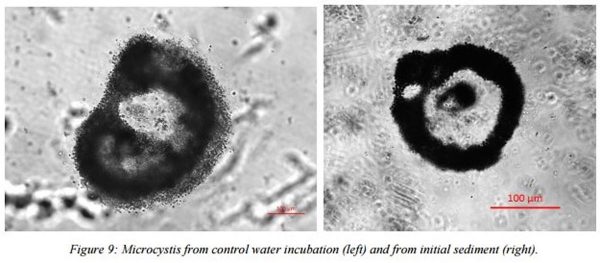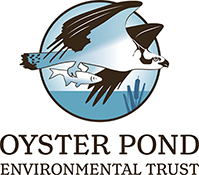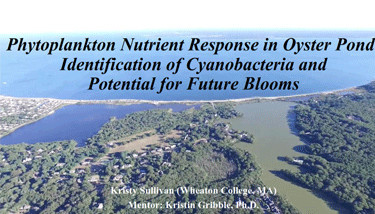OPET’s worries about the health risks of last summer’s algal bloom were confirmed by a student’s research project. Kristy Sullivan, an undergraduate at
Wheaton College, studied the algal bloom as her project in the Semester in Environmental Science program at the Marine Biological Laboratory. She introduced nutrients in water and sediments samples from Oyster Pond to try and replicate the bloom. She found five types of freshwater algae growing in the
samples including the cyanobacteria Microcystis and Aphanocapsa. Both of these can produce microcystin, a toxin that can cause nausea, vomiting, paralysis and acute liver failure in large doses or with long term exposure. We don’t know if the bloom ever reached toxic levels, but we are glad we took the precaution of warning the public to avoid contact with the water last September.
A finding of particular concern is that it appears Microcystis is overwintering in the sediment. If we have the same conditions as last summer, we might experience another bloom. This is why OPET is continuing to work with the Town to increase the inflow of saline water from Vineyard Sound. Increasing the salinity will dampen the growth of the freshwater algae.

Study Verifies Toxin-Producing Algae In Oyster Pond- FENT – Jan. 17, 2016 (Kristy Sullivan photo)
Ms. Sullivan introduced nitrogen, phosphorus and nitrogen + phosphorus to water and sediment samples from Oyster Pond. The combination of nitrogen and phosphorus created the largest algal growth in both the water and sediment samples. This demonstrates that Oyster Pond is sensitive to both nutrients, unlike most water bodies. This is an important consideration in developing a water quality protection plan for Oyster Pond. While salt ponds are sensitive to nitrogen, it is phosphorus that impacts freshwaters. Oyster Pond is managed as a brackish system due to its unique configuration and limited exchange with the ocean.
Despite OPET’s removal of the phragmites clogging the Trunk River and the dredging of 20 cubic yards of material by the Falmouth DPW this fall, it is not enough. There is still not enough salt water reaching the pond. The ideal salinity range for Oyster Pond is between 2 – 4ppt. After the dredging, the salinity crept up from 0.9 ppt to 1ppt (in contrast Vineyard Sound is 32ppt).
At a meeting between OPET, Chuck Martinsen, Deputy Director of Marine and Environmental Services and Dr. Brian Howes of UMass Dartmouth and author of the Massachusetts Estuaries Report on Oyster Pond, it was decided that the Lagoon must also be dredged.
Large storms, particularly in the fall and spring, push large amounts of sand and eelgrass up Trunk River and dump it in the Lagoon. There is not a correspondingly strong outflow from the pond to push this debris back out. It builds up over time, eventually blocking the water exchange between the pond and Vineyard Sound.
Thanks again to Chuck Martinsen; the Lagoon will be dredged this week using a crane and a 1,000 foot dragline. Periodic maintenance dredging of the Lagoon will need to be included as part of any water quality plan for Oyster Pond.


